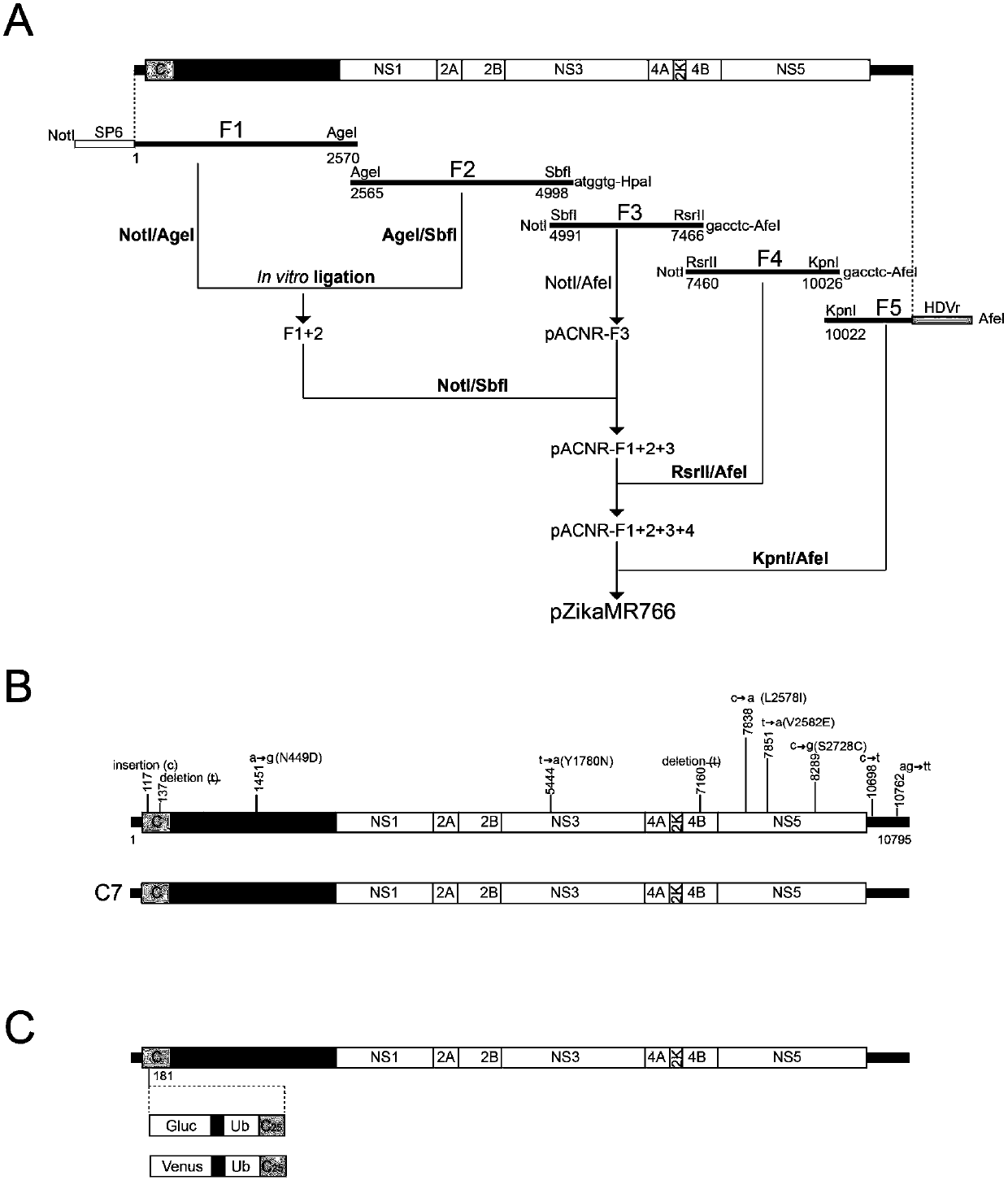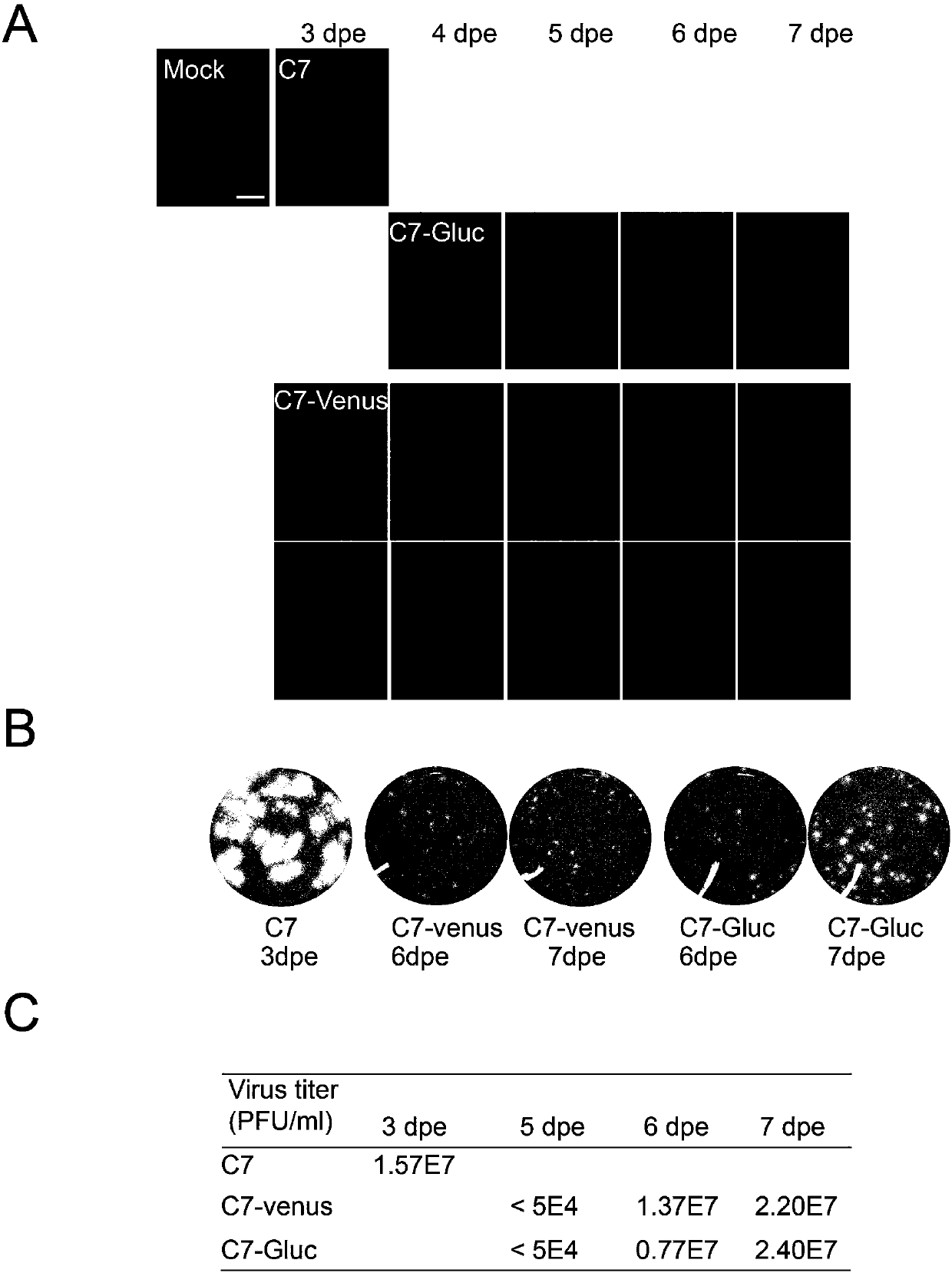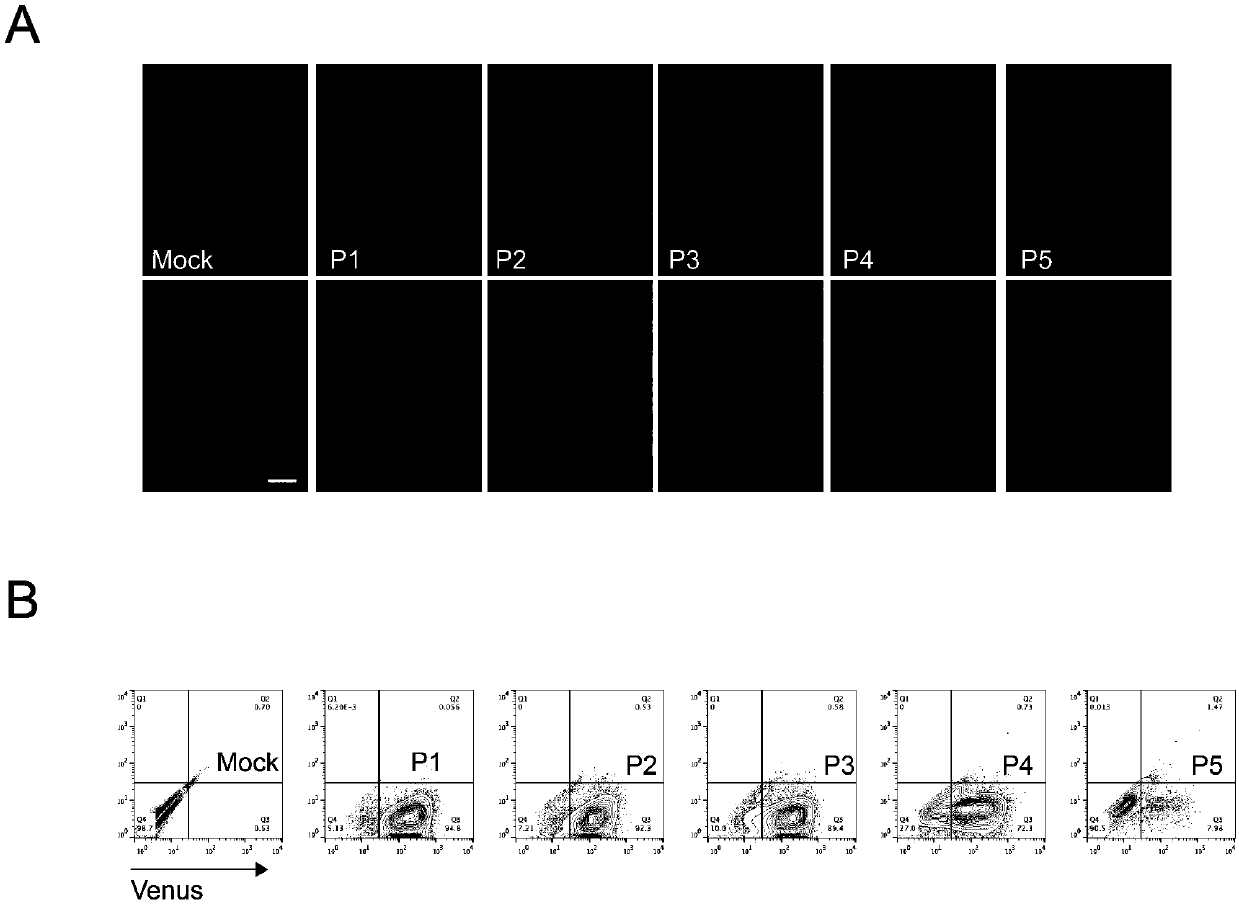Infectious clone of Zika virus MR766 strain and application thereof
A technology of MR766 and Zika virus, which is applied in the field of genetic engineering and medicine, can solve the problems of unstable reproduction and amplification, weakened virulence, and difficult cloning of virus sequences, and achieve the effect of reducing the infectivity and replication level of offspring viruses
- Summary
- Abstract
- Description
- Claims
- Application Information
AI Technical Summary
Problems solved by technology
Method used
Image
Examples
Embodiment 1
[0053] Embodiment 1: the construction of the infectious cDNA clone of Zika virus MR766 strain
[0054] Such as figure 1 As shown in A, we adopted the strategy of de novo synthesis of the whole genome sequence of the virus. According to the sequence information of the Zika virus MR766 strain published in the public database, we first divided into five segments and synthesized the sequence of the Zika virus MR766 strain (AY632535.2) (Kuno G et al.Arch Virol.2007,152( 4):687-96). Firstly, the synthesized F3 fragment was digested with the restriction endonuclease NotI / AfeI, and then ligated with the pACNR vector digested with the same restriction endonuclease to obtain the pACNR-F3 plasmid. The F1 fragment synthesized in vitro was digested by restriction enzyme NotI / AgeI and ligated in vitro with the F2 fragment digested by restriction endonuclease AgeI / SbfI, and the successfully ligated F1+F2 fragment was recovered by agarose gel electrophoresis. Then NotI / SbfI digestion was p...
Embodiment 2
[0058] Embodiment 2: Zika virus MR766 strain infectious cDNA clone produces viral replication ability and infectivity
[0059] Similar to the above method, the plasmids pZikaMR766-C7, pZikaMR766-C7-Gluc and pZikaMR766-C7-Venus were digested with AfeI, linearized, and then used in vitro transcription kit. 3 g of RNA transcribed in vitro was transferred into Vero cells by electrotransduction. The cytopathic changes were observed at different time points after electroporation. Such as figure 2 As shown in A, after the RNA transduction of pZikaMR766-C7 (C7), pZikaMR766-C7-Gluc (C7-Gluc) and pZikaMR766-C7-Venus (C7-Venus) transfected Vero cells, the cells showed obvious cytopathic changes (CPE). Among them, C7 showed obvious CPE on the 3rd day after electroporation (3dpe); C7-Gluc and C7-Venus showed obvious CPE on the 5th day. In C7-Venus, cells expressing green fluorescent protein can be seen on the 3rd day after electroporation, and then increase. Cell supernatants were col...
Embodiment 3
[0060] Embodiment 3: the stability of the recombinant virus expression reporter gene containing reporter gene
[0061] It has been reported that foreign gene segments inserted in the genome of flaviviruses are easily deleted during virus replication (Schoggins, et al. Proc Natl Acad Sci. 2012, 109(36): 14610). Such as image 3 As shown, in order to verify the stability of the virus expression reporter gene with the reporter gene we constructed, we took the recombinant virus C7-Venus containing the reporter gene Venus as an example, and the cell supernatant (P1 ) to re-infect new Vero cells at a dilution of 1:10, and observe the cells with a fluorescent microscope three days after infection; the new cell supernatant (P2) containing the C7-Venus recombinant virus was the same as above and re-infected new Vero cells at a dilution of 1:10 Cells, three days after infection the cells were visualized with a fluorescence microscope. The infection was subcultured sequentially as abov...
PUM
 Login to View More
Login to View More Abstract
Description
Claims
Application Information
 Login to View More
Login to View More - R&D
- Intellectual Property
- Life Sciences
- Materials
- Tech Scout
- Unparalleled Data Quality
- Higher Quality Content
- 60% Fewer Hallucinations
Browse by: Latest US Patents, China's latest patents, Technical Efficacy Thesaurus, Application Domain, Technology Topic, Popular Technical Reports.
© 2025 PatSnap. All rights reserved.Legal|Privacy policy|Modern Slavery Act Transparency Statement|Sitemap|About US| Contact US: help@patsnap.com



